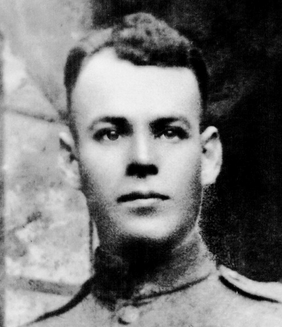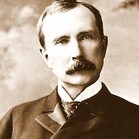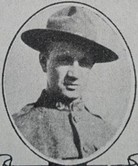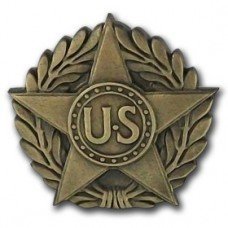|
|
|
|
|
|
World War I documentary project wins National History Day First Prize

Every year, thousands of students and teachers gather to share their passion for history in the National History Day Contest, which places students and their research projects into a friendly competition. Hosted by National History Day (NHD), a non-profit educational organization, students compete at the local and state level, where finally the top students then advance to the National Contest at the University of Maryland at College Park. This year, Sebastian Pizzini from Puerto Rico, placed first in the Senior Division: Individual Documentary category with his original work, Heroes: African Americans in World War I. US World War I Centennial Commission intern Joshua Baker interviewed Sebastian to find out how he became interested in WWI, how he settled on his winning project, and what the NHD competition was like.
|
"One can only wonder what would have happened if these US equines had not contributed to the war efforts."
View the Match: Solving the Mystery of a Doughboy Grandfather, and Celebrating a Family Reunion

"In April of 2017, I received a message through my genealogical service account from a man I didn’t know named Johannes Heibel. I immediately noted the highlighted link below the message that read “View the match.” Needless to say, I was intrigued to have been contacted by a relative whose name I did not recognize. However, the message I was about to read would lead to a family reunion that I never would have imagined." From that intriguing beginning, David Harstin maps out a trans-Atlantic detective story, 100 years in the making, that ends up connecting a German boy born in 1920 with an American family in Tennessee. Click here to read the entire story of how 21st Century genealogical sleuthing solved a World War I family mystery a century later.
|

A week of events honoring the hometown hero of Hiawatha, Kansas, came to a close on August 3 with a procession through downtown Hiawatha led by the Homer White American Legion Post No. 66. Homer White week honors the World War I fallen soldier killed in action in Germany and laid to rest on Aug. 3, 1919, following the end of the war in late 1918. The 100th anniversary of his funeral and the recent 100th anniversary of the end of hostilities in the Great War, which raged from July 1914 to November 1918, makes this an especially meaningful time for the Hiawatha legionnaires, who strive to memorialize the conflict in a world where no World War I veterans still live. Click here to read more about this centennial observance, and how today's veterans feel connected to those of a war one century ago.
|
Flag reaches final resting place, in memory of Maine World War I soldier
From the World War I Centennial News Podcast
Remembering Veterans:
Dr. Nancy Gentile Ford on Foreign-Born Soldiers in the WWI American Army

Episode #134
Highlights:American Philanthropy & WWI
Host - Theo Mayer
100 Years Ago: American Philanthropy and WWI - Host | @ 02:00
A Century of the Rockefeller Foundation - David Rockefeller Jr. | @ 09:20
Commission News: Focus on the Memorial - Host | @ 17:00
Remembering Veterans: Americans All - Nancy Gentile Ford | @ 19:10
Articles & Posts: Weekly Dispatch - Host | @ 30:40
|

A man is only missing if he is forgotten.
Monday's MIA this week is Corporal William E. Babinger. Born in Pittsburgh, Pennsylvania on September 9, 1891, William Edward Babinger was one of 4 children born to Lucy and Charles Babinger, who later moved the family to Detroit, Michigan. It was there, while working as a day laborer, that the brown hair and brown eyed William registered for the draft on June 5, 1917. Upon receiving his call, he was inducted on October 2, 1917 and sent to Camp Custer to train with the 85th Division of the ‘national’ (draft) army, where he was assigned to the 339th Infantry regiment. Dreaming of service in France, the 339th was nevertheless destined for something much more divertive – service in Russia as part of the allied effort at helping hold the ‘white Russian’ line against the Soviet Russians.
A Corporal with Headquarters Company at the time of his death, he was at first listed as being wounded and having died October 2, 1918, then as accidentally killed on that date. However, further inquiries ascertained that he and three others of his unit (who also remain MIA) were in fact killed on September 29, 1918 near the town of Obozerskaya and buried in temporary graves nearby. They remained unrecovered when the 339th left Russia in June, 1919.
A 1929 expedition by the VFW, though resulting in the return of 86 sets of remains, did not turn up Babinger or the other three from his regiment. However, a 1934 return expedition (organized after then President Roosevelt officially recognized the Soviet government), resulted in several sets of remains being brought in by the Russians from known American graves. Two of these sets, recovered on August 8, 1934 from Obozerskaya, were brought in from a spot of logged over land opposite the local railway station water tower and some 100 yards east of it, to be compared with dental profiles of the four missing men from HQ CO/339th Infantry. None were a match.
The story doesn’t end there – over the next three weeks we will be taking a look at the cases of the three other men to gain a better perspective of this particular situation, at which time we will be better able to make a determination as to dispositions.
And how did we come about this much detail concerning Corporal Babinger’s case? Through the valued donations made by YOU! This past week saw us back in St, Louis digging through the paperwork needed to make determinations in these 100 year old ‘cold cases’; a trip that was made possible by contributions that continue to come in by individuals with enough care and concern for our missing Doughboys. Time doesn’t dim their deeds – only failing memories. Want to help us keep those memories alive? Consider making a donation to Doughboy MIA and help us make a full accounting of the 4,423 American service personnel still listed as missing in action from WW1. It takes only a moment and your tax deductible contribution can be as large as you want or as small as $10.00 on our ‘Ten for Them’ program. Your contribution will help us make a full accounting of all 4,523 US MIA’s from WW1 and keeps these lost men from being forgotten. Make your tax deductible donation now, with our thanks. Remember: A man is only missing if he is forgotten.
|

Proudly wearing the World War 1 U.S. Victory lapel pin is a meaningful way to honor the contributions made for our country one hundred years ago. Soldiers received Victory buttons upon their discharge from service in “the Great War”. Hand cast in jeweler’s alloy and hand finished in a satin bronze patina, the design features the star, symbolizing victory, honor and glory; a wreath of evergreen laurel leaves symbolizing triumph over death; and the U.S. insignia, clearly identifying the country served. Measures 1” diameter.
A portion of proceeds from the sale of this item goes towards funding the building of the national World War One Memorial in Washington, D.C. A Certificate of Authenticity as Official Merchandise of the United States World War One Centennial is included.
This and many other items are available as Official Merchandise of the United States World War One Centennial.
|
|
|
|
|

Submitted by: Colonel B. Wayne Quist {American Legion Post 110 Historian}
Louis McCahill was born around 1896. Louis McCahill served in World War 1 with the United States Army. The enlistment was in 1917 and the service was completed in 1918.
Story of Service
Corporal Louis McCahill, American Legion Post 110, Lake City, Minnesota
American Legion Post 110 in Lake City, Minnesota was named in honor of World War I veteran Corporal Louis McCahill. He died in France on November 5, 1918 less than a week before the Armistice that ended “The Great War.” Corporal McCahill served in many engagements with the 412th Motor Truck Company 426 during the conflict. He is buried in Suresnes American Cemetery in Paris, France: Plot A, Row 4, Grave 5.
Lake City American Post 110 was named in honor of Corporal Louis McCahill on February 7, 1921. In addition, Lake City, MN named McCahill Memorial Park on Lakeshore Drive and McCahill Ballpark on Jewell Ave for Corporal Louis McCahill.
|
|
|
|
|